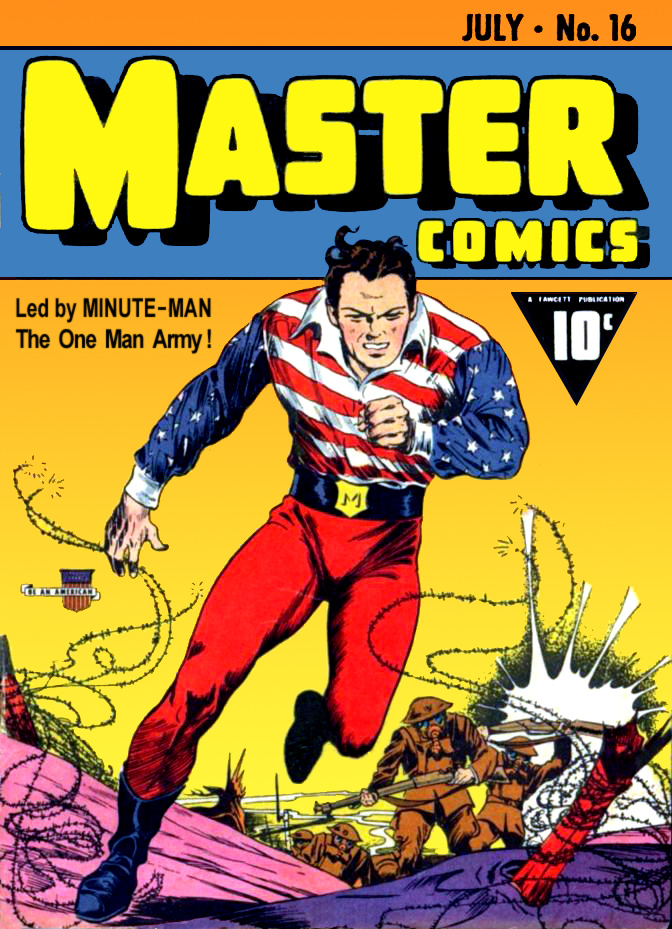Fawcett Comics, a division of Fawcett Publications, played a significant role in the Golden Age of Comic Books during the 1940s. This era marked a boom in comic book popularity, and Fawcett emerged as a powerhouse publisher with diverse characters. Among them, Captain Marvel stood out as a cultural phenomenon, captivating audiences with the magical transformation of Billy Batson into a superhero by uttering the word “Shazam!” This article explores the history of Fawcett Comics, its iconic characters, legal challenges, and its enduring legacy in comic books.
| Fawcett Comics | |
|---|---|
 |
|
| Publisher Information | |
| Industry: | Comics |
| Genre: | Superhero, horror |
| Founded: | 1939 |
| Defunct: | 1953 |
| Fate: | Lash Larue, Jungle Girl, Strange Suspense Stories, & several other Fawcett IP sold to Charlton Comics in 1954. Captain Marvel intellectual properties acquired by DC Comics from Fawcett Publications in 1991. |
| Headquarters: | New York City, New York, United States |
| Parent: | Fawcett Publications |
History
Fawcett Publications was founded by Wilford Fawcett in 1919 with the magazine Captain Billy’s Whiz Bang and eventually expanded into a line of periodicals with a combined circulation of ten million a month…
Titles Published
-
- All-Hero Comics (1 issue, 1943)
- America’s Greatest Comics (8 issues, 1941-1943)
Fawcett Movie Comics
Fawcett also published several comic book adaptations of Hollywood films under the banner Fawcett Movie Comic. The publications ranged from 1949 to 1952 and were released bi-monthly…
The Genesis of Fawcett Comics

Fawcett Publications, founded by Wilford Fawcett in 1919, initially gained recognition with the magazine “Captain Billy’s Whiz Bang.” In the late 1930s and early 1940s, Fawcett ventured into the burgeoning comic book industry. Thrill Comics #1, the initial entry developed by writer Bill Parker and artist C. C. Beck, evolved into Whiz Comics #2 in February 1940, marking the first appearance of Captain Marvel. Fawcett’s line-up of artists, including notable names like Jack Kirby and Mac Raboy, contributed to the success of its diverse comic book offerings.
The Rise of Captain Marvel

Captain Marvel’s whimsical adventures and the Marvel Family’s ensemble, including Captain Marvel Jr. and Mary Marvel, outshone even Superman in popularity during the Golden Age. Fawcett faced legal challenges from National Comics (DC Comics), alleging copyright infringement. The legal battle resulted in Fawcett ceasing publication of superhero titles in 1953 when the comics market declined.
Fawcett’s Multifaceted Comic Book Offerings

Beyond superheroes, Fawcett delved into various genres, reflecting the diversity of its creative endeavors. The company published horror comics like “Beware! Terror Tales” and “This Magazine Is Haunted,” alongside teenage humor, cartoon animals, romance, war, and Western genres. Titles such as “Hoppy the Marvel Bunny” and “Six Gun Heroes” showcased Fawcett’s commitment to exploring different narrative landscapes.
The Decline and Revival

Fawcett Comics temporarily closed its publishing wing in 1953, leading to the acquisition of some characters and titles by Charlton Comics. In the 1960s, Fawcett returned to comics, focusing on titles like “Dennis the Menace.” Marvel Comics secured the “Captain Marvel” trademark in 1967, prompting DC to license and purchase the character in 1972. Due to trademark conflicts with Marvel, DC rebranded the character as “Shazam!”
Fawcett’s Comic Book Titles

The extensive list of Fawcett’s comic book titles includes iconic series such as “Captain Marvel Adventures,” “The Marvel Family,” and “Whiz Comics.” The Marvel Family, consisting of Captain Marvel Jr., Mary Marvel, and others, contributed to the richness of Fawcett’s superhero universe. The company also published titles based on movie stars, matinee serials, and adaptations of Hollywood films under the banner “Fawcett Movie Comic.”
Conclusion

With its unforgettable characters and diverse storytelling, Fawcett Comics left an indelible mark on the Golden Age of Comic Books. Captain Marvel’s journey from the pages of Whiz Comics to legal battles and eventual revival under DC Comics as Shazam showcases the resilience of a beloved superhero. Fawcett’s legacy lives on through its characters and their impact on shaping the comic book landscape, contributing to the rich tapestry of superhero storytelling that continues to captivate audiences today.
Fawcett Comics Gallery

FAQs about Fawcett Comics
1. What was Fawcett Comics, and when was it active?
Fawcett Comics was a division of Fawcett Publications, a successful comic book publisher during the Golden Age of Comic Books in the 1940s. It was active from 1939 to 1953.
2. Who was Fawcett Comics’ most popular character?
Fawcett’s most famous character was Captain Marvel, the alter ego of Billy Batson, who transformed into the hero by saying the magic word “Shazam!”
3. What other characters were published by Fawcett Comics?
Fawcett Comics published a diverse range of characters, including Captain Video, Hopalong Cassidy, Ibis the Invincible, Bulletman and Bulletgirl, Spy Smasher, Captain Midnight, Phantom Eagle, Mister Scarlet and Pinky, Minute-Man, Commando Yank, Golden Arrow, and more.
4. What genres did Fawcett Comics explore?
Fawcett Comics delved into various genres, including superheroes, horror, teenage humor, cartoon animals, romance, war, Western, and more. They produced titles like “This Magazine Is Haunted,” “Hoppy the Marvel Bunny,” “Sweethearts,” and “Soldier Comics.”
5. Why did Fawcett Comics cease publication in 1953?
Fawcett Comics faced a declining comics market, leading to the cessation of its superhero titles in 1953. The ongoing legal case with National Comics (DC Comics) also played a role.
6. What happened to Fawcett Comics’ characters and stories after closure?
After ceasing publication, Fawcett sold several completed stories, artwork, and characters to Charlton Comics in 1954. The Captain Marvel intellectual properties were acquired by DC Comics from Fawcett Publications in 1991.
7. How did Fawcett Comics contribute to the comic book industry?
Fawcett Comics significantly contributed to the comic book industry during the Golden Age. The whimsical adventures of Captain Marvel and the Marvel Family outsold Superman for a period.
8. Did Fawcett Comics return to publishing comics after 1953?
Fawcett returned to publishing comics in the 1960s, focusing on titles like “Dennis the Menace” and others.
9. What notable legal challenges did Fawcett Comics face?
Fawcett Comics faced a copyright infringement lawsuit from National Comics (DC Comics), claiming that Captain Marvel infringed on the copyright of Superman. The legal battle played a role in Fawcett’s decision to cease superhero comic publications.
10. Are there any comic book adaptations of Hollywood films by Fawcett Comics?
Fawcett Comics released several comic book adaptations of Hollywood films under the “Fawcett Movie Comic.” These adaptations ranged from westerns to science fiction stories and were published from 1949 to 1952.
This post was created with our nice and easy submission form. Create your post!





2 Comments